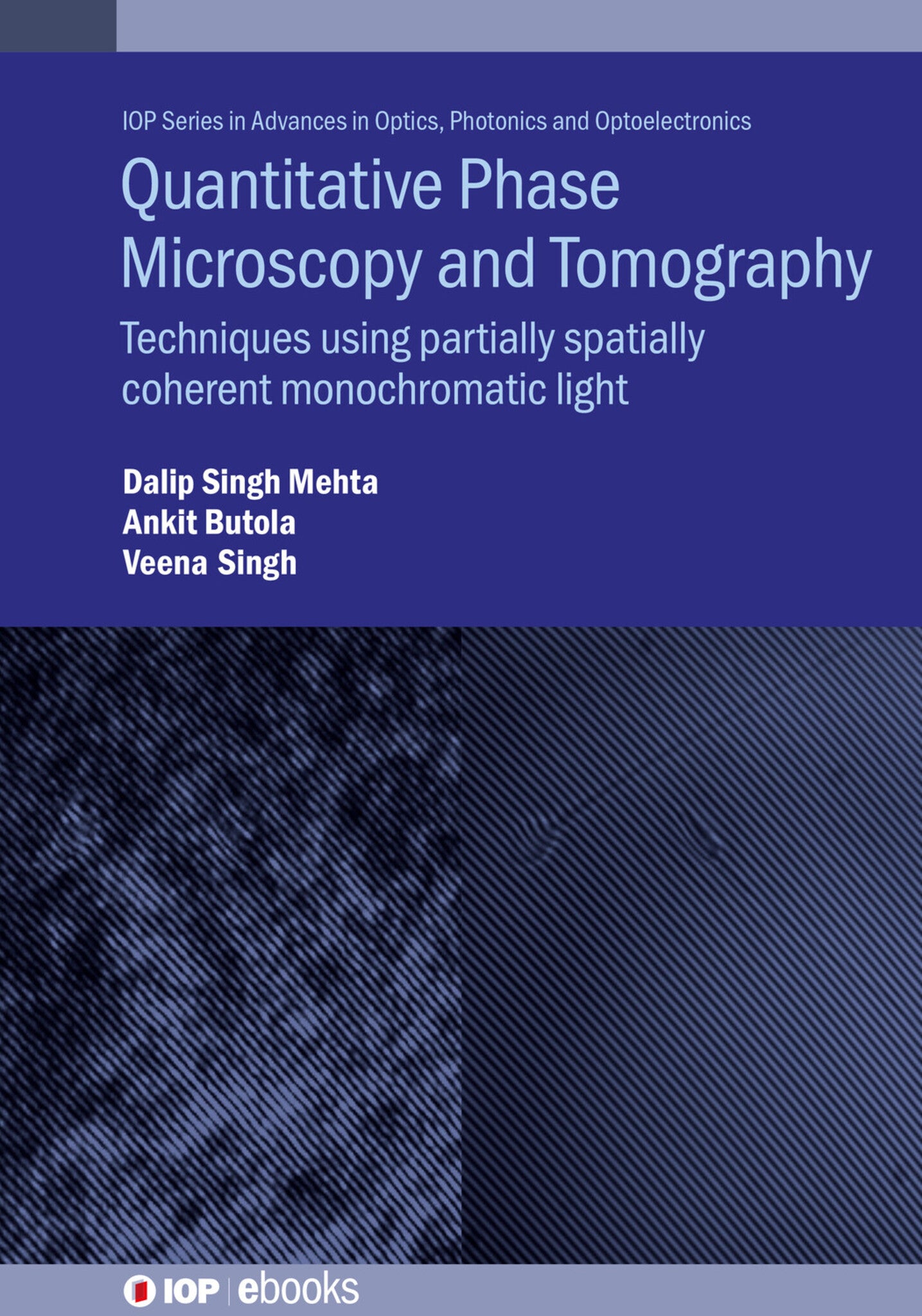We're sorry. An error has occurred
Please cancel or retry.
Quantitative Phase Microscopy and Tomography

Some error occured while loading the Quick View. Please close the Quick View and try reloading the page.
Couldn't load pickup availability
- Format:
-
28 December 2022

Quantitative phase Microscopy (QPM) has become an important imaging technique in biology for investigating cells and tissues. QPM is an optical interference or holographic microscopic technique in which an input light beam is divided into two beams and one passes through the object and the other acts as a reference beam.
This book develops and describes the most advanced QPM techniques and computational imaging techniques using partially spatially coherent monochromatic light rather than highly coherent lasers. Using partially coherent light as a light source instead of a traditional laser has significantly improved QPM imaging results. Imaging techniques that will be discussed include speckle-free QPM both off-axis and common path interferometric configurations, structured illumination phase microscopy (SIPM), chip-based nanoscopy, machine learning, deep learning and artificial intelligence (AI) in phase microscopy and OCT and Multi-spectral and hyper-spectral phase microscopy. Coherent-noise free QPM techniques described in this book leads to an order of magnitude improved spatial phase sensitivity, space-bandwidth product, and high temporal phase stability. The technique was utilized for sperm cells, macrophages, liver sinusoidal endothelial cells, cancer cells and RBCs for precise QPM. We have demonstrated that partially spatially coherent monochromatic light is most suitable source for high precision QPM.
The text is highly useful for biologists, optical engineers, optical scientists, researchers working in QPM and OCT, and graduate and post graduate students.
Key Features
- Presents advances in quantitative phase microscopy and applications for quantitative information.
- Includes strategies for generating spatially partially coherent monochromatic light.
- Presents coherence-artifacts free off-axis and common path QPM configurations and various algorithms, such as, Fourier Transform and Phase Shifting fringe analysis techniques for phase reconstruction.
- Describes advances in QPM and optical coherence tomography (OCT), such as, Machine learning, Support Vector Method and Artificial intelligence architecture for phase analysis.
- Contains experimental results on the QPM systems with partially spatially coherent light with significant improvement in spatial-phase sensitivity and phase measurement accuracy compared to coherent laser light.
- Contains label-free quantitative analysis of various biological cells and tissues, such as, sperm cells, macrophages, liver sinusoidal cells, and cancerous cells.
- Contains futuristic speckle-free multi-spectral and hyperspectral QPM techniques.

SCIENCE / Physics / Optics & Light, Optical physics, TECHNOLOGY & ENGINEERING / Imaging Systems, TECHNOLOGY & ENGINEERING / Biomedical, Image processing, Biomedical engineering

1. Introduction
2. Partially spatially coherent off-axis quantitative phase microscopy
3. Partially spatially coherent common-path quantitative phase microscopy
4. Structured illumination phase microscopy (SIPM)
5. Chip-based nanoscopy and quantitative phase microscopy.
6. Longitudinal spatial coherence gated tomography using partially spatially coherent
monochromatic light
7. Low-coherence (white light) interference microscopy with colour fringe analysis
8. Machine learning, deep learning and AI in phase microscopy and OCT.
9. Multi-spectral and hyper-spectral phase microscopy
10. Conclusions and Future scope
APPENDIX
INDEX



